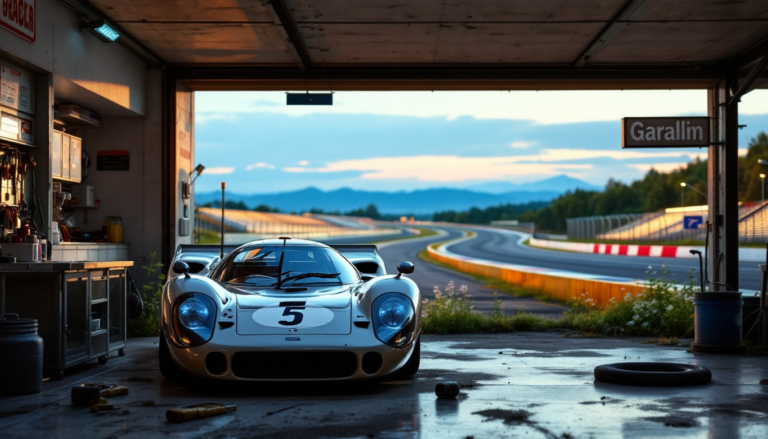Argomenti trattati
Racing cars are crafted with a single-minded purpose: to compete, dominate the track, and push the boundaries of speed and physics. Their early lives are nothing short of exhilarating, filled with high-speed curves, daring overtakes, and unforgettable nights at iconic events like Le Mans, where the atmosphere is practically designed for their triumphs. But, as with all things, time brings about a second chapter, one that’s often tinged with nostalgia and less celebrated.
The Glory Days
The initial phase of a racing car’s life is defined by performance and prestige. These machines are engineered to achieve astonishing speed and agility, turning each curve on the track into an opportunity for a thrilling display of skill and precision. The roar of their engines and the rush of air as they navigate sharp turns creates a symphony that resonates with fans and drivers alike. Legendary races like Le Mans serve as the perfect backdrop for these cars to showcase their incredible capabilities, capturing the hearts of motorsport enthusiasts around the globe.
Yet, the life of a racing car isn’t solely about competition; it’s also intertwined with the dreams and aspirations of the drivers at the helm. Each car embodies the very spirit of racing, standing as a testament to the relentless pursuit of excellence. The adrenaline-fueled moments on the racetrack forge an unbreakable bond between the car and its driver, a relationship built on shared victories and the painful sting of defeats.
The Second Life: A Melancholic Transition
As time marches on and technology evolves, even the most celebrated racing cars face uncertain futures. The thrill of their prime gradually morphs into bittersweet memories as they slow down, outstripped by the innovations of newer models. These once-mighty machines, now considered too slow for contemporary circuits, find themselves caught in limbo. They aren’t relics worthy of museum display, nor are they still the reigning champions on the track; instead, they become shadows of their former selves.
In this second life, racing cars often stir feelings of nostalgia, much like retired actors reminiscing about their heyday. They may be too young for the collectors’ market, but too old to compete with the fresh talent emerging in the motorsport world. This transitional phase can be heart-wrenching, as these vehicles, once symbols of speed and power, become mere echoes of a glorious past, resonating deeply with their dedicated fans.
Looking Ahead: The Future of Motorsport
As we contemplate the evolution of racing cars, it’s crucial to consider what the future holds for motorsport. With the rise of electric vehicles, like those from Tesla, the racing landscape is on the brink of transformation. While the traditional roar of combustion engines might fade away, new technologies open up thrilling possibilities for the sport. The question remains: how do we honor the legacies of past champions while welcoming the innovations of tomorrow?
During this transition, it’s vital to keep the spirit of racing alive, ensuring that the thrill of competition remains intact. Perhaps one day, we’ll look back and recognize the importance of preserving the memories of the racing cars that once ruled the tracks, celebrating their contributions to the sport while embracing the advancements that lie ahead. After all, isn’t it the stories of these magnificent machines that truly make motorsport what it is today?

